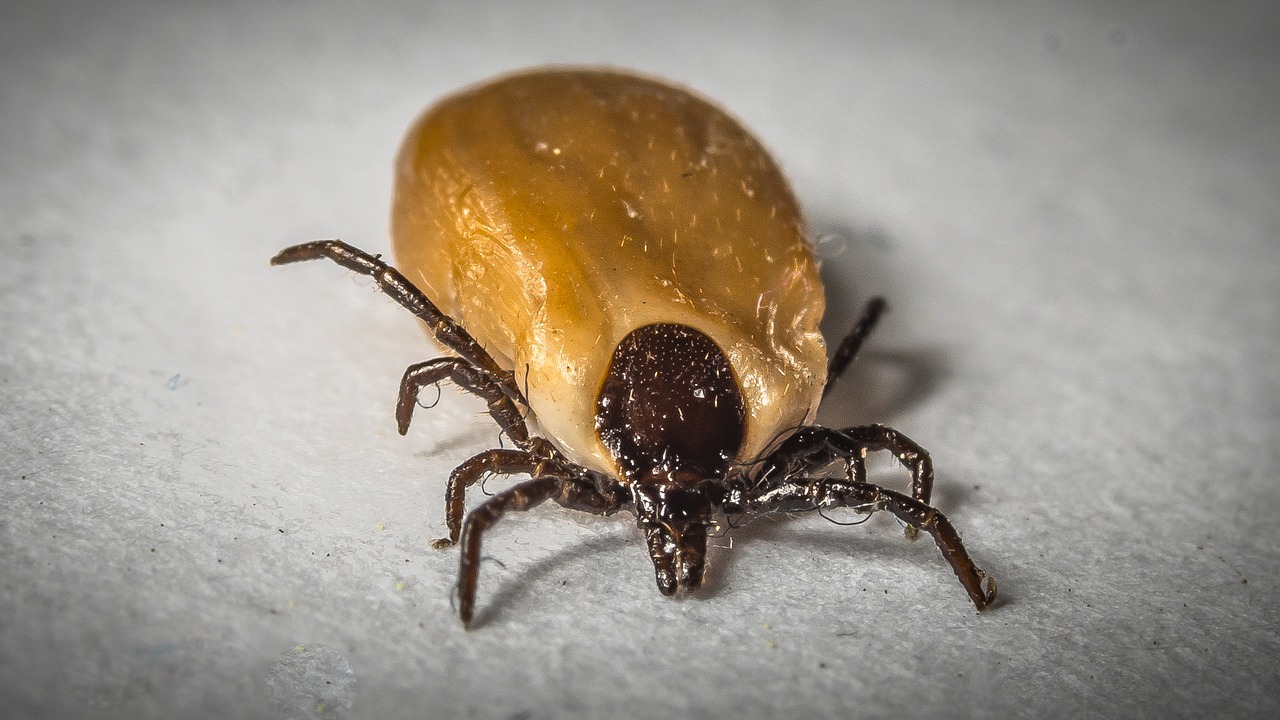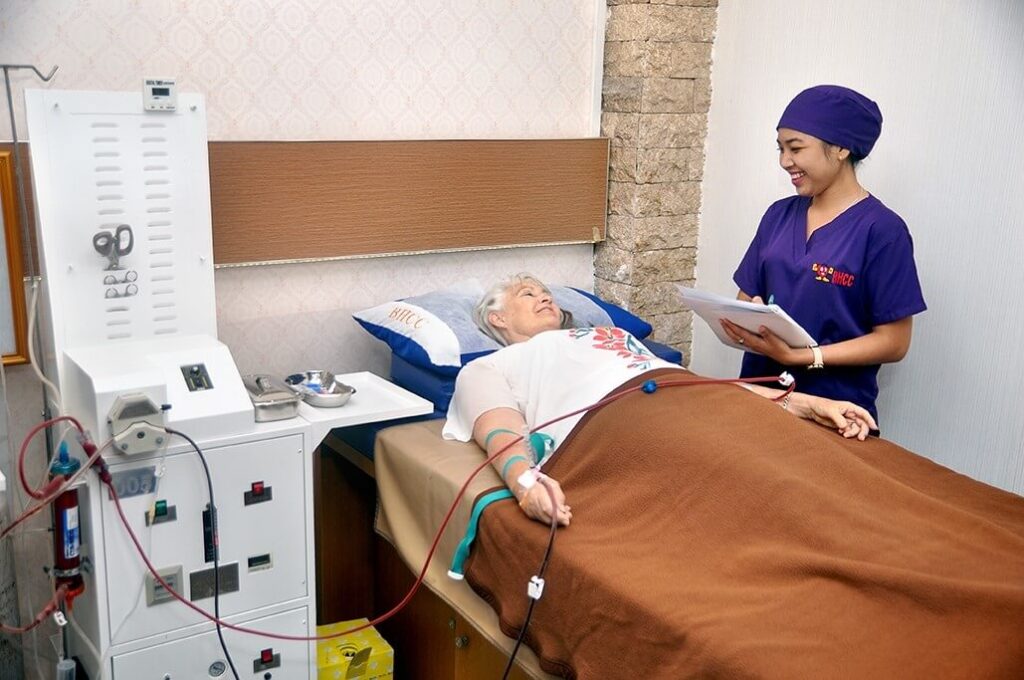Underestimating Lyme Disease Will Make It Worse

Lyme disease affects an estimated 300,000 people in the United States alone. According to CDC, this disease is the most common vector-borne disease in the United State. Humans and animals can be infected with Borrelia burgdorferi, Borrelia mayonii, Borrelia afzelii and Borrelia garinii, following the bite of an infected deer tick, also known as the black-legged tick. The famous public figure such as Justin Bieber or Bella Hadid, once suffered this lyme disease as well. The side effects are hardly to be ignored, since it really affects quality of life.
The severity and potential long-term consequences of Lyme disease highlight the importance of early diagnosis and treatment. Most cases of Lyme disease can be effectively treated with a few weeks of antibiotics. However, if not treated promptly or adequately, the disease can lead to chronic symptoms and more severe health issues, which are significantly harder to treat.
In very rare cases, complications from untreated Lyme disease, such as Lyme carditis (which affects the heart) or severe neurological problems, could potentially be life-threatening. However, such outcomes are extremely rare and typically occur when the disease has been left untreated for a prolonged period.

Table of Contents
Root Cause of Lyme Disease
Lyme disease is a disease spread by tick bites. If bitten by a tick, human blood will be sucked until the tick is no longer attached to the skin. Lice can attach to any part of the body, but are often found in hard-to-see areas, such as the groin, armpits, and scalp. When fleas suck blood, bacteria can pass from ticks to humans. Generally, to transmit Lyme disease, the tick must remain attached for 36 to 48 hours.
There is no evidence that Lyme disease can be transmitted from human to human. You cannot catch Lyme disease from touching, kissing, or having sex. Scientists discovered that Lyme disease bacteria can live in donated blood. If you have Lyme disease, you are prohibited from donating your blood.
Same with dogs and cats, pets can also get Lyme disease, but there is no evidence of animal-to-human transmission. But they can bring fleas into your home.
If you eat meat that is infected with Lyme disease, there is a good chance that you will catch it. Practicing food hygiene can prevent infection. Lyme disease can be passed from mother to child. If pregnant women are infected, the baby in the womb can also be infected. Although rare, there have been cases of stillborn babies (stillborn) from Lyme disease infection. That is why it is best to not eat uncooked meat & always pay attention to the source of your foods.
What increases my risk for Lyme disease?
There are many risk factors for Lyme disease, including:
Individuals at higher risk for Lyme disease typically include those who spend time in areas where the disease is more common, particularly in regions known for the presence of blacklegged ticks (also known as deer ticks). Key risk factors include:
- Geographical Location: Lyme disease is more prevalent in certain regions, particularly in the northeastern, mid-Atlantic, and north-central United States, as well as in parts of Europe and Asia. People living or spending time in these areas are at higher risk.
- Outdoor Activities: Individuals who engage in outdoor activities such as hiking, camping, gardening, and hunting in areas where blacklegged ticks are common are at increased risk. Ticks thrive in wooded, brushy, or grassy areas.
- Occupational Exposure: Jobs that involve working outdoors, especially in forestry, landscaping, and wildlife and park management, can increase the risk of tick exposure.
- Seasonal Timing: Ticks are more active during warmer months, typically from spring to fall. This is when individuals are more likely to come in contact with ticks.
- Pets: Having pets that spend time outdoors can also increase the risk, as pets can bring ticks into the home.
How to know if I’m affected by Lyme disease?
Symptoms of Lyme disease are similar to those of many other conditions. Therefore, the best way to diagnose Lyme disease is to do a blood test to see if there are bacteria in your blood.
The first method of diagnosis is to look at the circular rash caused by tick bites. If your doctor finds a rash, he or she may ask if you visited a grass or wood area recently, or if you have pets.
The second method is to do some laboratory tests. Laboratory tests are not recommended for people with Lyme disease symptoms such as a rash with flu-like symptoms. Laboratory tests are intended to confirm the diagnosis and look for other conditions with similar symptoms. Some tests to diagnose Lyme disease:
- Enzyme-linked immunosorbent assay (ELISA): The most common test to detect Lyme disease bacteria. The way this test works is to look for antibodies to B. burgdoferi – a type of Lyme disease bacterium. This test may not be effective in early-stage Lyme disease.
- Western blot test: If the ELISA test is positive, this test is done to confirm the diagnosis.
Lyme disease symptoms : How to Handle
If you see lice on your skin, remove them immediately with tweezers. Lice usually attach for several hours before sucking blood. Do not crush the tick, but pull it carefully and steadily. Once you have removed the tick, remove it and apply an antiseptic to the bitten area.
If you are diagnosed with this disease, seek treatment immediately. The sooner you are treated, the faster the recovery process.
Treatment for Lyme disease includes antibody drugs to kill the bacteria. Depending on the stage of the disease, you may need 2 to 4 weeks of treatment.
If left untreated, Lyme disease can spread to other parts of the body and cause more severe symptoms, and can affect the brain, nervous system, muscles and joints, heart and circulation, digestion, reproductive system, and skin. For severe symptoms, your doctor may recommend intravenous antibiotics for 14 to 28 days. This medication is more severe and can result in side effects such as a decreased white blood cell count and mild to moderate diarrhea.
After treatment, few people still experience lime disease symptoms, such as muscle aches and fatigue. If not treated properly, Lyme disease can go away but come back months or even years later. This condition is known as post-treatment Lyme disease or chronic Lyme disease. It is not known how many people are diagnosed and treated but still have the disease. The Centers for Disease Control and Prevention estimates a range of 10-20%.
Ozone Therapy for Lyme Disease : Is It Scam?
Ozone therapy such as AHT or EBOO are often mentioned as the infamous scam to treat lyme disease. However, please continue to read if you want to take ozone therapy as an alternative way to treat your recurring lyme disease.
Ozone is a form of oxygen therapy in which one additional oxygen atom is placed together with the 2 oxygen atoms that normally form an oxygen molecule. This oxygen molecule can be called an activated or “strengthened” molecule, because this oxygen is O3 and no longer O2. By activating oxygen in this way, the healing effect of this life-giving substance is amplified.
You may be surprised to learn that Ozone therapy has been around for a long time. In fact, this therapy was used in America long before antibiotics were invented.
In 1929, a book entitled “Ozone and Its Therapeutic Actions” was published in the US covering 114 diseases and how to treat them with ozone. The 40 authors of the book are the heads of leading US hospitals. At that time Ozone therapy was very well known and considered as one of the treatment methods.
However, in 1933, the American Medical Association, headed by Morris Fishbein, planned to eliminate all treatment methods that competed with drug therapy. The emphasis on ozone therapy in the US began then, and continues to this day, except in 10 states, where physicians are protected by state law. At the request of the AMA, the FDA began to seize ozone generators in the 1940s.

In conclusion, ozone therapy does not cure lyme disease instantly, but it helps you to maintain your immunity system to fight back those infections. EBOO, as an example, is the most potent and powerful way of using ozone for overall health and healing and anti-aging. In this method, blood drawn from one hand is directed into a specific filter (same as a dialysis machine) where the blood slowly passes through.
When the blood passes through the filter, any residual products in the blood are filtered out – this includes Lyme toxins, excess fat, cholesterol, urea, creatine, heavy metals such as mercury, lead, and aluminum – and at the same time a mixture of oxygen and ozone gases with certain levels. Put into the blood. During this procedure, which is usually performed within an hour, up to 5 liters of blood or 3/4 of the total blood volume passes through the filter to be cleaned and treated with ozone/oxygen.
You could contact us here to do a discussions with the expert about your lyme disease.
Comments are closed.